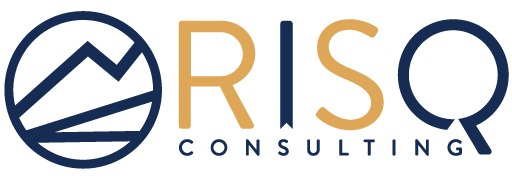Top 10 High-cost Claim Conditions in 2022
This article is from RISQ Consulting’s Zywave client portal, a resource available to all RISQ Consulting clients. Please contact your Benefits Consultant or Account Executive for more information or for help setting up your own login.

Stop-loss provider Sun Life released its 2022 list of high-cost claims, revealing the COVID-19 pandemic’s widespread impact on Americans’ medical care, mental health and infant care.
Sun Life analyzes its claims data annually to help self-funded employers understand trends and potential impacts of the highest-cost medical and injectable drug claims. According to the report, 71% of all stop-loss claims in 2022 came from the following top 10 conditions, diseases or disorders:
-
Malignant neoplasm: $324.8 million in stop-loss reimbursements
-
Cardiovascular: $142.2 million
-
Leukemia, lymphoma and multiple myeloma: $115.2 million
-
Orthopedics and musculoskeletal: $106 million
-
Newborn and infant care: $106 million
-
Sepsis: $89.7 million
-
Gastrointestinal: $70.2 million
-
Neurological: $70 million
-
Respiratory: $69.4 million
-
Urinary and renal: $54.3 million
While COVID-19 dropped from the top 10 to number 11, it continues to impact other medical conditions. For example, COVID-19 can affect cardiac risk, potentially triggering or accelerating preexisting coronary artery disease. Additionally, mental health conditions increased during the pandemic, with alcohol-related disorders as a top subcategory. Newborn and infant care claims due to preterm births are also on the rise. According to the report, pregnant women in the United States who have had or have COVID-19 have a 40% higher risk of preterm birth. Sun Life suggests that the alarming rate of preterm births is attributed to inadequate prenatal care and preexisting maternal health conditions—such as hypertension, diabetes and COVID-19—which added challenges in terms of underlying health and access to care.
View the full Sun Life report to discover the top 20 high-cost conditions for 2022 and how these numbers have trended over the past few years.
Employer Takeaways
Cancer remains the largest driver of high-cost claims, with 11 of the top 20 high-cost injectable drugs related to cancer treatment. However, cardiovascular disease continued to rise and took the number two spot in 2022. Heart failure, specifically, is the largest cardiovascular claim subcategory. Based on this report, COVID-19 continues to have a ripple effect on Americans’ health and access to care.
Employers should continue to monitor health-related trends to make the right employee benefits decisions for their organization and employees.
Contact us today for more information.
- Published in Blog
Virtual Second Opinions
This article is from RISQ Consulting’s Zywave client portal, a resource available to all RISQ Consulting clients. Please contact your Benefits Consultant or Account Executive for more information or for help setting up your own login.

There may be a time in employees’ lives when they receive a medical diagnosis or feedback they feel uncertain about. Second opinions allow patients facing medical challenges to seek additional medical information on their condition, which can provide clarity and other treatment options available. With the increase in the popularity of telehealth, there is even the option of virtual second opinions, which can provide convenience by saving employees time and travel.
A virtual second opinion can help ease some of an employee’s stress after a serious diagnosis or when looking for a diagnosis for ongoing symptomatic issues. It can be difficult for a patient to find an appointment, especially if they need specialty care. Therefore, offering health coverage that includes virtual care gives a more accessible and efficient option for care. This article explains the additional benefits of receiving second opinions virtually.
Benefits of Virtual Second Opinions
Access to a second opinion can help relieve worry about diagnosis or treatment uncertainty. A virtual second opinion can provide easier access to different opinions, creating peace of mind for a patient. Additional benefits to this virtual care option can include:
- Improved patient care—The most significant benefit patients find from seeking a virtual second opinion is an improvement in overall care. This is due to having access to a large library of doctors nationwide. No matter where a patient is located, they may potentially receive access to any specialist they need.
- Increased timeliness—Receiving a virtual second opinion is often more efficient than going in person to receive one. The virtual process may allow patients to receive in-depth care and a treatment plan from a physician in about two weeks; in contrast, in-person visits are booked months out in most cases.
- Individualized care—It’s easier to make informed health decisions when all the facts are present. With a virtual second opinion, doctors can take the facts and ease patient anxiety by answering questions and creating a clear plan.
- Expanded care—Offering the benefit of virtual second opinions to employees helps those who live in areas of the country that do not have adequate access to health care.
- Eased anxiety—Virtual second opinions can ease the anxiety and stress of employees that may have received a diagnosis or care option they’d like analyzed in-depth. It can also empower an individual to take charge of their health and increase overall health literacy.
It’s important to note that there are different virtual second opinion program levels available. For example, these programs can include quality care for cancer and musculoskeletal disorders. Other programs offer care from specialists and subspecialists, such as surgeons and oncologists, that may be required for a patient’s care.
Summary
The level of care offering needed at each organization will vary, so it’s important to survey the needs of employees to find out which coverage options will receive the most use. Providing the option of virtual second opinions can give employees comfort in knowing they have access to additional care when they need it most. For more information on virtual second opinions, contact RISQ Consulting today.
- Published in Blog
A Primer on Medical Stop-loss Insurance
This article is from RISQ Consulting’s Zywave client portal, a resource available to all RISQ Consulting clients. Please contact your Benefits Consultant or Account Executive for more information or for help setting up your own login.

Catastrophic and unexpected health care claims are on the rise. This increase in catastrophic claims is, in part, the result of medical and pharmaceutical advances, such as specialty drugs and cell and gene therapies, as well as medical price inflation. As a result, many employers with self-funded health plans are actively looking for ways to minimize their financial exposures to potentially catastrophic claims. A common strategy these employers have leveraged is purchasing stop-loss insurance.
This article provides a general overview of stop-loss insurance and outlines some considerations for employers to keep in mind when deciding whether to purchase this coverage.
What Is Stop-loss Insurance?
Generally speaking, stop-loss insurance helps self-funded employers protect themselves from higher-than-anticipated health claim payouts by limiting their exposure to employee medical claims that exceed a predetermined amount. In other words, such coverage can prevent abnormal claim frequency and severity from draining employers’ financial reserves.
Stop-loss insurance plays an important role in helping employers manage their health care costs and protecting against unexpected or catastrophic claims, as it sets a ceiling for the amount they pay in health claims. This coverage is not a form of medical insurance, but rather a policy employers can purchase to manage their financial risks.
How Does Stop-loss Insurance Work?
Under a stop-loss insurance policy, an employer’s claims liability is limited to a certain amount (also called an attachment point), therefore ensuring abnormal employee health claims do not drain the employer’s financial reserves. An employer can add stop-loss insurance to an existing plan or purchase it independently.
If an employer’s health claims exceed a predetermined amount, their insurer will usually reimburse them for all additional claims. For example, if an employer has a stop-loss insurance policy with an attachment point of $500,000, their insurer will typically begin providing reimbursement after the plan’s claims exceed $500,000. It’s worth noting that since stop-loss coverage only reimburses an employer for claims that exceed their policy’s attachment point, the employer is initially responsible for paying employee claims before they reach the established cost ceiling.
Types of Stop-loss Insurance
There are two types of stop-loss insurance: individual (or specific) and aggregate (or total claims). Understanding the difference between individual and aggregate stop-loss insurance can help self-funded employers evaluate and determine which coverage best meets their needs and reduces their financial exposures. Because health plan usage can be unpredictable, some employers choose to purchase both individual and aggregate stop-loss insurance to provide their organizations with maximum financial protection.
Individual Stop-loss Insurance
Individual stop-loss insurance limits an employer’s liability when an individual employee’s medical claims exceed the attachment point. As such, this coverage can protect employers against unexpectedly high claims from individual employees.
Aggregate Stop-loss Insurance
Aggregate stop-loss insurance can help safeguard employers from the total sum of health claims for an entire group of employees rather than any one individual. Under this coverage, an employer is usually reimbursed when their expenses for all employees’ medical claims exceed the attachment point for the plan year.
Stop-loss Insurance Considerations
Each organization is unique. Deciding whether stop-loss insurance is necessary depends on an organization’s specific needs, workforce characteristics and risk tolerance. Reviewing all relevant factors (e.g., rates, policy terms and potential exposures) can help employers decide whether purchasing this coverage makes sense. Employers can consider the following factors when evaluating whether to purchase stop-loss insurance.
Understanding the Attachment Point
The attachment points for individual and aggregate stop-loss insurance differ. Generally, the attachment point for an individual stop-loss policy is a specific dollar amount. As a result, an employer is only responsible for an individual employee’s claims up to that amount.
For aggregate stop-loss insurance, the attachment point is usually a percentage of expected claims. The typical attachment point for aggregate stop-loss insurance tends to be between 120% and 125% of expected health claims. In any case, a stop-loss insurance policy’s attachment point can vary depending on factors such as the employer’s size, employee demographics and overall risk profile.
Evaluating Coverage Limitations
Stop-loss insurance plans are medically underwritten; therefore, an insurer may refuse to cover certain conditions or require higher claim thresholds for those conditions. For example, if a plan enrollee consistently has high-cost claims, a stop-loss insurer may refuse to continue to cover that enrollee or require a higher claim threshold for the enrollee. This practice is known as lasering.
Additionally, since stop-loss contracts typically last for one year, an employer’s high-cost claimants may only be covered for a few months before the insurer excludes them from the policy upon renewal. Thus, the employer will likely be financially exposed to those claims the following year.
Monitoring Increasing Costs
While stop-loss insurance can help employers reduce their financial exposures when health claims are higher than anticipated in a given year, the cost of such coverage can increase annually. Rising claims can also make it more difficult to obtain rates from other providers.
Ensuring Stop-loss Coverage Aligns With Health Plan Provisions
Some stop-loss policies may exclude certain medical treatments or classes of individuals covered by employers’ health plans. Consequently, employers may be on the hook for expensive claims that aren’t covered under their stop-loss policies. Therefore, employers should consider reviewing their stop-loss policies and health plan provisions to ensure they align to limit their potential financial exposures.
Summary
Selecting the right insurance policies can have major financial repercussions for employers. Having sufficient coverage can lower employers’ insurance costs, reduce their risks and keep their workers healthy. Stop-loss insurance can make all the difference in helping employers mitigate their financial risks, especially as catastrophic health claims are increasing. Understanding stop-loss insurance will allow employers to make the best policy decisions for their respective organizations.
For more health care resources, contact RISQ Consulting today.
- Published in Blog
Monitoring Snow Loads to Protect Structure
This article is from RISQ Consulting’s Zywave client portal, a resource available to all RISQ Consulting clients. Please contact your Benefits Consultant or Account Executive for more information or for help setting up your own login.
Major snow events can impact the integrity of a structure, making it imperative for commercial property owners to understand their building’s characteristics and structural system prior to the start of the snow season. Having familiarity with the building structure can help owners determine if any changes occurred during a major snow event and if repairs are necessary. This article discusses key building information owners should be aware of, what to look for during a pre-season inspection and warning signs of a building in duress.
Key Building Information
A commercial property owner’s knowledge of their building could be the difference between getting through a major snow event safely or experiencing structural failure. Property owners should know the following regarding the current condition of the structure:
- Applicable building codes
- Design snow load
- Structural framing system
- Thermal properties
- Renovation history
Pre-season Inspection
A proper commercial building inspection can reveal the actual condition of a property and give owners the opportunity to fix any problems before the snow season begins. To mitigate damage and identify any potential issues, commercial property owners should:
- Perform a detailed inspection. Check for cracks, split seams, buckling, loose parts, staining, mold and rot while inspecting:
- Surface membranes
- Roof vents
- Flashing
- Field tears
- Gutters
- Drainage pipes
- Clean debris. Ensure the roof is clear of debris, including fallen branches, leaves and garbage. Debris can prevent water from draining, allowing snow to buildup and cause water damage or add weight to the structure.
- Look for pooling water. Keep an eye out for areas where water pools, as this could be an indication of a clogged drain or slow-draining line.
- Check the flashing. Inspect the flashing—the thin material used to direct water away from certain areas on the roof—before winter for cracks or crevices that would allow water to enter.
- Inspect the downspouts. Ensure downspouts are properly attached to the gutters, clear of debris and that their termination bars are sealed.
While these can all be inspected regularly by the owner or an employee, utilizing a certified roof inspector who knows what to look for can help ensure the roof is in good condition before any major snow events occur.
Warning Signs of Duress
Roof decks or framing that is under duress from snow loads typically display warning signs. Commercial property owners should watch for the following signs in wood, metal and steel constructed buildings:
- Ceiling tiles or boards that are sagging or falling out of the ceiling grid
- Sprinkler lines and sprinkler heads that are sagging or deflecting below suspended ceilings
- Roof members, such as metal decking or plywood sheathing, that are sagging
- Doors or windows that no longer open or close
- Wood members that are cracked or split
- Walls or masonry that are cracked
- Truss bottom chords or web members that are bowing
- Popping, cracking and creaking noises
If any of these warning signs are observed, the building should be promptly evacuated, and a detailed structural inspection should be conducted by a qualified professional.
Conclusion
Major snow events can cause a lot of damage to a commercial structure, especially if it hasn’t been properly inspected and maintained. Therefore, commercial property owners should ensure that their building is prepared for winter weather by inspecting the structure and making any necessary repairs. For more information, contact us today.
- Published in Blog
These Three Trends Could Have Big Implications for Workers’ Compensation
This article is from RISQ Consulting’s Zywave client portal, a resource available to all RISQ Consulting clients. Please contact your Benefits Consultant or Account Executive for more information or for help setting up your own login.
Legislation surrounding the gig economy, single-payer health insurance and marijuana legalization all have the potential to impact the U.S. workers’ compensation system, according to a National Council on Compensation Insurance (NCCI) report.
Digital platforms such as Uber ushered in a modern gig economy and renewed public discourse on worker classification. Proposals in numerous states would provide criteria for determining whether a worker in the gig economy should be classified as an employee or an independent contractor. For instance, California has a three-part test to determine the status of a worker; lawmakers in Rhode Island and Vermont have considered similar tests. Other states, including Alabama, South Dakota and Washington, have focused on workers using digital platforms.
The NCCI noted that proposals making it more likely for a worker to be classified as an employee would generally benefit an injured worker in the event of a workplace accident. “On the other hand, proposals that would make it more likely for a worker to be considered an independent contractor may reduce costs for employers,” the organization said.
No state has fully adopted a single-payer health insurance system, though several are studying the issue, according to the report. Most proposals that reference workers’ compensation would direct the board of new state single-payer programs to “develop a proposal for coverage of healthcare items and services covered under the workers’ compensation system.”
California, Kansas, New York and Rhode Island considered or are considering such proposals this year. Last year, Washington enacted legislation establishing a new commission to study universal health care, and Oregon extended the life of a previously created task force.
And while marijuana remains illegal at the federal level, numerous states took steps this year toward legalizing marijuana for medical or recreational use.
States are divided on whether to allow, require or prohibit medical marijuana reimbursement in workers’ compensation. State policymakers may need to consider adopting a fee schedule or another mechanism to address reimbursement, the NCCI said. The legalization of recreational marijuana “raises concerns about workplace safety, drug-free workplace issues, and drug testing issues, and may also challenge employers and insurers to provide reimbursement,” according to the report.
Federal legalization would mean insurers may no longer need to worry about conflicts between state and federal law.
“Claims could be reported, and appropriate data could be collected, which would assist in understanding the impact of the use of marijuana in treating workers’ compensation claims,” the NCCI noted. However, it would still be up to states to determine how to address workplace safety, reimbursement and other concerns.
For more articles on workers’ compensation topics, contact RISQ Consulting today.
- Published in Blog
Reducing Auto Claims for Businesses
This article is from RISQ Consulting’s Zywave client portal, a resource available to all RISQ Consulting clients. Please contact your Benefits Consultant or Account Executive for more information or for help setting up your own login.
Vehicle-related crashes are the leading cause of work-related deaths. In addition to the potential for loss of life, work-related automobile accidents expose businesses to liability risks, legal expenses, lost time, decreased productivity, and increased insurance and workers’ compensation rates.
Whether your business leases a single passenger car or owns an entire fleet of commercial vehicles, auto liabilities must be monitored in order to try to prevent these ramifications.
Businesses can actively manage auto risks by setting driver qualifications, creating driving rules, and implementing driver training. Review the following guidance to learn more about how to reduce auto claims for your business.
Set Driver Qualifications
Setting and keeping standards for drivers can greatly reduce the risk of auto accidents. Review motor vehicle records (MVRs) for all new employees; review them annually for every driver. MVRs contain important historical driving information on an individual’s moving violations, driving-under-the-influence (DUI) offenses, vehicular crimes and other types of point accumulations. Work with your risk management professionals to determine appropriate standards for your business. Some qualifications to consider are:
- No serious driving violations—In the past three years, drivers should not have any recorded DUIs, hit-and-runs, incidents of reckless or negligent driving, driving with a suspended license or driving 15 mph over the speed limit.
- Fewer than three moving violations—In the past three years, drivers should have fewer than three incidents of speeding, changing lanes improperly, running red lights or failing to yield.
- Fewer than two at-fault accidents—In the past three years, drivers should have no more than one at-fault accident. At-fault accidents include any incident where the driver is cited with a violation, negligently contributes to the accident, or is involved in a single-vehicle accident.
Mandate Seat Belt Usage
Motor vehicle-related injuries are twice as costly as other work-related injuries, averaging $72,500 per injury claim. Fortunately, wearing a seat belt can reduce the risk of injury or death by 50%. Create a successful seat belt policy by:
- Assigning a high-level manager to support the enforcement of a comprehensive driver safety program
- Using on-the-spot surveys, motor vehicle monitoring, collision reports and company training sessions to ensure drivers comply with company policy
- Asking employees to sign a pledge saying they will wear seat belts
Minimize Distractions for Drivers
Crash risks are two to six times higher when a driver is texting or manipulating a cellphone, according to recent studies. Even talking on a cellphone is a cognitive distraction that may pull a driver’s focus from the road. Eating, drinking, adjusting the radio, talking to vehicle passengers and checking the GPS also cause significant distractions. To avoid these:
- Consider banning all cellphone use, even if it’s legal in your state or if a hands-free headset is used.
- Try voice-controlled devices, such as GPS, which will allow drivers to keep more of their focus on the road.
- Consider policies to limit the number of passengers allowed in a vehicle during work hours.
Utilize Technology
The use of modern telematics allows businesses to analyze fleet data, make informed decisions and increase productivity while cutting costs. Ways to utilize technology include:
- Using telematics—In-vehicle telematics allow fleet managers to watch their drivers for risky behaviors in real-time. Monitored behaviors include speeding, hard braking, hitting the gas and not wearing a seatbelt.
- Using dash cams—Dashboard cameras, often referred to as dash cams, can be used to monitor drivers, promote safe driving practices, and reduce liability if an accident occurs.
- Before adding dashcams to your fleet, review state-specific laws on privacy concerns related to videotaping your drivers and the public.
Prevent Theft
Not only can motor vehicle theft cause costly business delays, but if you or an employee is in the car during the attempted theft, the result can also be dangerous or even fatal. Although vehicle theft is covered under comprehensive car insurance policies, preventing theft is the best way to avoid dangerous situations or expensive delays. To minimize the risk of theft:
- Keep doors locked and windows shut. This applies any time you are away from the vehicle.
- Hide valuables. Keep your wallet, purse, phone, and other valuables hidden to reduce a thief’s incentive to break into your vehicle.
- Park in secure, high-traffic areas. Park near guard booths or store entrances if parking in a public garage. Keeping your car in a locked garage at home is the safest option.
- Use anti-theft devices. Use steering wheel locks or gearshift column locks to make theft more difficult. Most new vehicles have tracking devices, but these devices can also be purchased for older cars.
- Exploit your vehicle identification number (VIN). VINs are used by law enforcement agencies to identify stolen cars. Paint the VIN under the hood, under the trunk and on the engine to make it more difficult for thieves to sell parts of your car.
Train Drivers
Drivers can be a significant source of liability behind the wheel. By implementing regular trainings, fleet leaders can build trust with their drivers and reduce the risk of accidents. Some topics to cover include:
Intoxicants—Drinking alcohol impairs a driver’s reaction time, steering responsiveness and lane control. Educate drivers on the dangers of driving while intoxicated and monitor their driving for signs of intoxication.
Defensive driving—Significant anger, aggression or road rage behind the wheel was expressed by 80% of drivers in a recent survey. Aggressive behaviors include speeding, tailgating, blocking cars from passing or changing lanes and “punishing” other drivers with brakes or headlights. Train drivers to:
- Maintain an adequate following distance
- Use turn signals
- Allow others to merge
- Use high beams responsibly
Drowsy driving—A 2017 census estimated there were 91,000 police-reported crashes caused by drowsy driving. These crashes occur most frequently between midnight and 6 a.m and often involve a single driver with no passengers. To avoid drowsy driving:
- Get a proper night’s sleep.
- Avoid drinking alcohol before driving.
- Check prescription or over-the-counter drugs to see if they could cause drowsiness.
- Pull over for a 20-minute nap if you feel drowsy.
Seasonal hazards—Be aware of changing seasonal hazards. On a similar note, drivers not accustomed to particular weather patterns may need additional training. For example, a driver who isn’t familiar with cooler climates may not be used to driving on ice. Below are a few items drivers should be mindful of in each season:
- Summer—Warm weather leads to an increased number of walkers and cyclists. Look for pedestrians and cyclists everywhere, especially in low-visibility conditions.
- Fall—Back-to-school season means more children on the road. Never pass a stopped school bus with red flashing lights.
- Fall also means a return to deer season. Avoid collisions with deer by staying alert, using high beams and wearing your seatbelt.
- Winter—With snow and ice on the ground, it’s important to drive slowly, accelerate and decelerate slowly, and increase the distance between yourself and other vehicles. When there are snowplows on the road, remember the road in front of them is usually worse than the road behind them. Pass with lots of room and keep your headlights on.
- Spring—The changing season means a return to roadwork construction. Stay focused and patient when driving in work zones. Be mindful of the reduced speed limit and remain alert.
Report an Accident
If an accident does occur, a great deal can be done to contain costs and minimize business interruption losses. Good reporting and proper procedures can help minimize the business costs. In the event of an accident:
- Pull your vehicle to the side of the road.
- Assess injuries.
- Don’t leave the scene of the accident.
- Collect as much information as possible.
- Alert the police or highway control.
- Begin the claims process with your insurer.
Purchasing the right auto insurance policy, keeping the proper documents in your vehicle, and ensuring your vehicle is emergency-ready with traffic cones and flares can be helpful if an accident does occur.
For more risk management guidance, contact your broker today.
- Published in Blog
What You Need to Know About the Biden-Harris Administration’s Actions to Prevent Surprise Billing
This article is from RISQ Consulting’s Zywave client portal, a resource available to all RISQ Consulting clients. Please contact your Benefits Consultant or Account Executive for more information or for help setting up your own login.
On July 1, 2021, the Biden-Harris Administration, through the U.S. Departments of Health and Human Services (HHS), Labor, and the Treasury, as well as the Office of Personnel Management, issued “Requirements Related to Surprise Billing; Part I,” an interim final rule with comment period that will restrict surprise billing for patients in job-based and individual health plans and who get emergency care, non-emergency care from out-of-network providers at in-network facilities, and air ambulance services from out-of-network providers.
This first rule implements several important requirements for group health plans, group and individual health insurance issuers, carriers under the Federal Employees Health Benefits (FEHB) Program, health care providers and facilities, and providers of air ambulance services.
What is a surprise medical bill?
When a person with a group health plan or health insurance coverage gets care from an out-of-network provider, their health plan or issuer usually does not cover the entire out-of-network cost, leaving them with higher costs than if they had been seen by an in-network provider. In many cases, the out-of-network provider can bill the person for the difference between the billed charge and the amount paid by their plan or insurance, unless prohibited by state law. This is known as “balance billing.” An unexpected balance bill is called a surprise bill.
This rule protects patients from surprise bills under certain circumstances.
Who will benefit from this rule?
These surprise billing protections apply to you if you get your coverage through your employer (including a federal, state or local government) or through the federal Marketplaces, state-based Marketplaces or directly through an individual market health insurance issuer.
The rule does not apply to people with coverage through programs such as Medicare, Medicaid, Indian Health Services, Veterans Affairs Health Care or TRICARE. These programs already prohibit balance billing.
Who is affected by surprise bills?
Surprise medical bills and balance bills affect many Americans, particularly when people with health insurance unknowingly get medical care from a provider or facility outside their health plan’s network. This can be very common in emergency situations, where people usually go (or are taken) to the nearest emergency department without considering their health plan’s network.
An in-network hospital still might have out-of-network providers, and patients in emergency situations may have little or no choice when it comes to who provides their care.
For non-emergency care, an individual might choose an in-network facility or an in-network provider but not know that a provider involved in their care (for example, an anesthesiologist or radiologist) is an out-of-network provider.
How does this rule help?
If your health plan provides or covers any benefits for emergency services, this rule requires emergency services to be covered:
- Without any prior authorization (meaning you do not need to get approval beforehand)
- Regardless of whether a provider or facility is in-network
This rule also protects people from excessive out-of-pocket costs by limiting cost sharing for out-of-network services to in-network levels, requiring cost sharing for these services to count toward any in-network deductibles and out-of-pocket maximums, and prohibiting balance billing under certain circumstances. Cost sharing is what you pay out of your own pocket when you have insurance, such as deductibles, coinsurance and copayments when you get medical care.
The protections in this rule apply to most emergency services, air ambulance services from out-of-network providers and non-emergency care from out-of-network providers at certain in-network facilities, including in-network hospitals and ambulatory surgical centers.
Additionally, this rule requires certain health care providers and facilities to furnish patients with a one-page notice on:
- The requirements and prohibitions applicable to the provider or facility regarding balance billing
- Any applicable state balance billing prohibitions or limitations
- How to contact appropriate state and federal agencies if the patient believes the provider or facility has violated the requirements described in the notice
This information must be publicly available from the provider or facility, too.
When does the rule take effect?
Consumer protections in the rule will take effect beginning on Jan. 1, 2022.
The regulations are generally applicable to group health plans and health insurance issuers for plan years beginning on or after Jan. 1, 2022, and to FEHB program carriers for contract years beginning on or after Jan. 1, 2022. They are applicable to providers and facilities beginning on Jan. 1, 2022.
- Published in Blog








